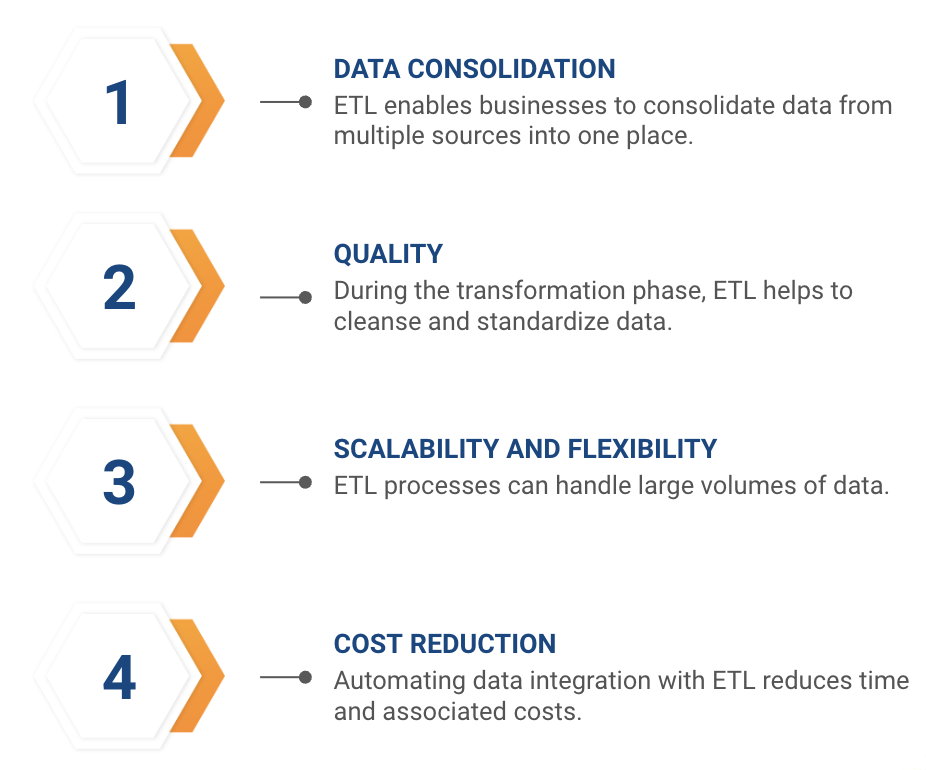
Role of ETL in data integration strategies
September 01, 2024
Table of contents
Quick Access

Data integration has become an essential component for business success. Organizations collect and store massive amounts of data from various sources, making the integration of this data crucial for making informed decisions.
In this context, Extract, Transform, and Load (ETL) processes play a pivotal role. In this blog, we will explore the importance of ETL in modern data integration strategies and its impact on organizations.

What is ETL and why is it crucial for data integration?
ETL, which stands for Extract, Transform, and Load, is a process that takes data from various sources, transforms it into a suitable format, and loads it into a centralized data warehouse. This process is vital for data integration because it ensures that information is available and usable in a consistent format, making it easier to analyze and use in decision making.

Key Benefits of ETL in Data Integration
Data Consolidation: ETL enables businesses to consolidate data from multiple sources into one place, facilitating a comprehensive view of information.
Improving data quality: During the transformation phase, ETL helps clean and standardize data, eliminating inconsistencies and errors.
Scalability and flexibility: ETL processes can handle large volumes of data and adapt to the changing needs of the company.
Reduced costs and time: Automating data integration with ETL reduces the time and costs associated with manual data handling.

Use cases: How companies are using ETL for data integration
Many leading companies are leveraging ETL to improve their data integration processes. For example, Amazon uses ETL to process and analyze large volumes of customer data, optimizing its product recommendations. Another case is Netflix, which uses ETL to integrate user behavior data and improve the personalized experience of its subscribers.
Challenges and considerations in implementing ETL
Despite its benefits, implementing ETL can present challenges. The complexity of the process, the need for specialized resources, and managing large volumes of data are some of the barriers that companies must overcome. Furthermore, it is crucial to choose the right ETL tools that align with the specific needs of the business and ensure that processes are scalable and flexible for future expansions.

The Future of ETL in Data Integration
The future of ETL is marked by the evolution towards more automated and agile processes, with the incorporation of technologies such as artificial intelligence and machine learning. These technologies enable continuous optimization of the ETL process, making data integration more efficient and accurate. Furthermore, with the increasing adoption of cloud data architectures, ETL is adapting to operate in hybrid and cloud environments, which will allow businesses to manage data more flexibly.
ETL remains a cornerstone in modern data integration strategies. As businesses continue to face the challenge of managing large volumes of information from diverse sources, ETL provides the tools necessary to ensure that data is accurate, consistent, and useful. For business leaders, understanding and leveraging the role of ETL is essential to staying competitive in an increasingly data-driven business environment.
We recommend you this video
Related Blogs
-6.45.03-p.m.png)
Migrating to Oracle Cloud: Strategies and Considerations
-9.01.17-a.m.png)
Nearshore development helps midsize companies grow
-9.01.17-a.m.png)
Methodologies used by IT staff augmentation companies
-9.01.17-a.m.png)
Hire a software development team in Colombia
-2.10.50-p.m.png)
What you gain by hiring a software provider in Panama
-3.57.25-p.m.png)